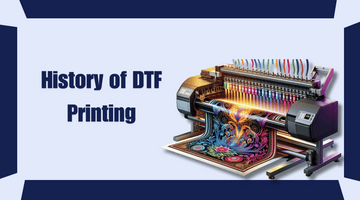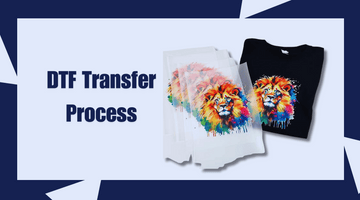
Direct-to-Film (DTF) printing has undergone a remarkable evolution since its inception. From its humble beginnings to the latest innovations, the journey of DTF transfer technology is both fascinating and integral to the world of digital printing.
Origins of DTF Transfer Technology
The roots of DTF printing can be traced back to the early 2000s when advancements in digital printing technology paved the way for new methods of transferring designs onto various substrates. Initially, DTF transfer technology primarily targeted the garment industry, offering a cost-effective and efficient alternative to traditional printing methods.
Evolution of DTF Printing Process
Over the years, DTF printing has evolved significantly, thanks to advancements in printer technology, ink formulations, and transfer methods. From basic monochrome designs to intricate full-color prints, DTF technology has become increasingly versatile and capable of meeting the demands of diverse industries.
Here are some key factors contributing to the rise of DTF:
-
E-commerce Boom: With the rise of online businesses and on-demand printing services in the mid-2010s, DTF's ability to handle small batch production efficiently became a major advantage.
-
Customization Craze: Consumers are increasingly drawn to personalized products, and DTF printing allows for quick and easy customization of garments like t-shirts, hats, and tote bags, perfectly aligning with this growing trend.
-
Technological Advancements: Improvements in inkjet printing technology and the development of specialized DTF films and adhesives in the mid-2010s and beyond have further enhanced the capabilities and accessibility of DTF printing.
Historical Timeline of DTF Transfer Method
The historical timeline of DTF transfer method reflects the rapid progress and innovation within the industry. Early DTF printers were bulky and limited in their capabilities, but advancements in print head technology and ink formulations have revolutionized the process, enabling high-quality prints with exceptional detail and vibrancy.

The evolution of DTF printing has been marked by continuous innovation and refinement. Today, DTF printers offer unparalleled speed, accuracy, and versatility, making them indispensable tools for businesses across various industries.
Also Read: Common Industries and Applications for DTF transfer
Future Evolution of DTF Printing Process
As DTF printing is still a young technology, exciting advancements are on the horizon. Here are some potential areas of future development:
- Eco-Friendly Inks and Adhesives: As sustainability becomes a growing concern, the development of eco-friendly inks and adhesives compatible with DTF printing will be crucial. This is an ongoing area of research and development.
- White Ink Advancements: While DTF excels with light-colored garments, advancements in white ink technology could make it a viable option for dark fabrics as well. This is another area where researchers are looking for ways to improve DTF printing capabilities.
- Automation and Efficiency: Further automation in the DTF process could increase efficiency and potentially bring down production costs. This could involve advancements in machinery and software to streamline the workflow.
Conclusion:
The history of DTF printing is a testament to the power of innovation and the relentless pursuit of excellence in the field of digital printing. From its humble beginnings to the latest advancements, DTF transfer technology continues to revolutionize the way we print and decorate various substrates.
FAQs:
When was DTF invented?
DTF printing technology was first developed in the early 2000s as a cost-effective alternative to traditional printing methods.
How long have DTF printers been around?
DTF printers have been in existence for over two decades, continually evolving to meet the growing demands of the digital printing industry.
Why is DTF so popular?
DTF printing has gained popularity due to its versatility, cost-effectiveness, and ability to produce high-quality prints on a wide range of substrates.



